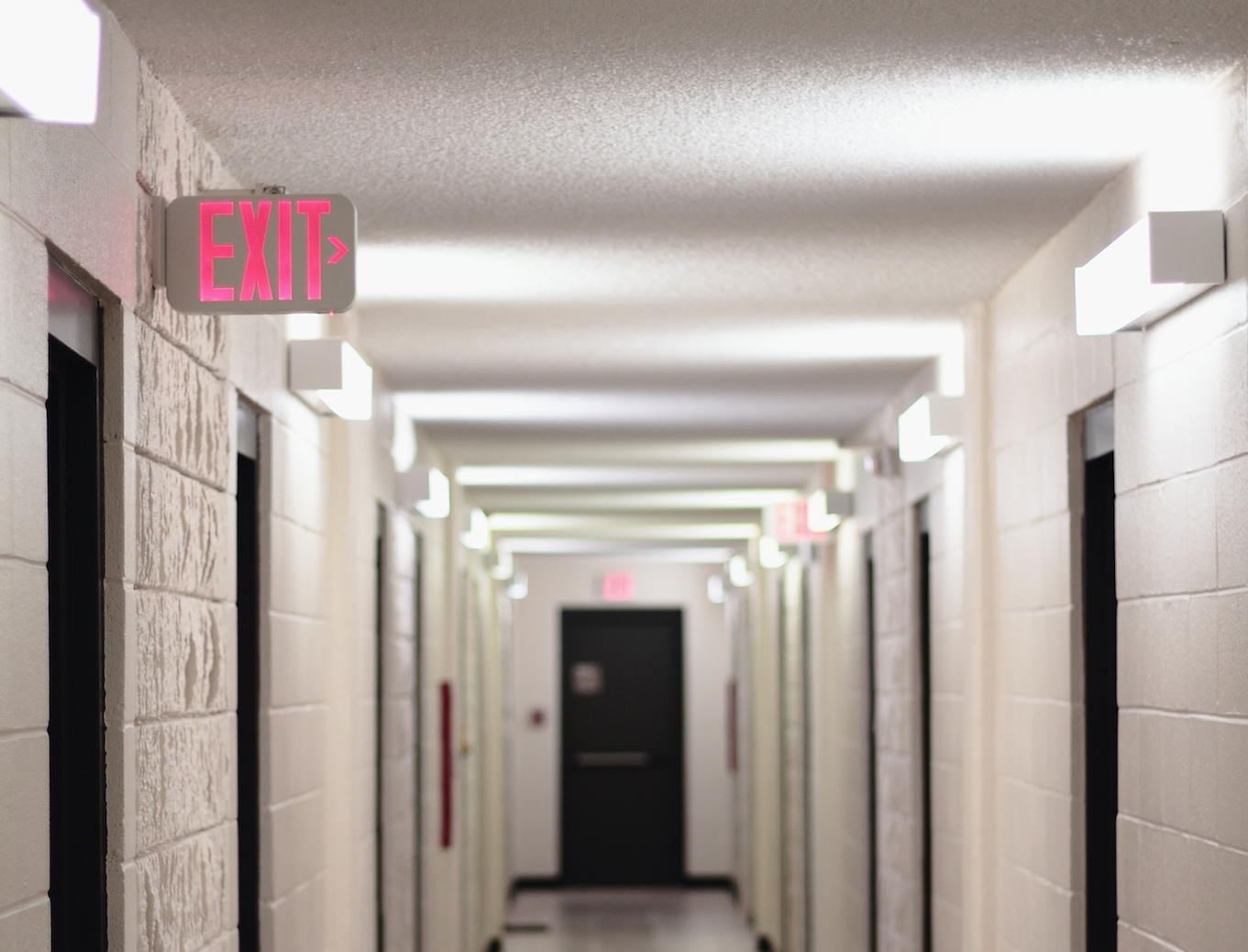Is Immigration Detention Effective?
Canada's Immigration Detention Practices and Why They Should be Abolished
In light of recent immigration detentions and family separations by the thousands in the United States, more attention is being paid to the fact that the Canadian government also incarcerates thousands of asylum seekers and refugees every year.
These incarcerations often take place away from the public eye. Refugees who have not committed crimes are at times detained for indefinite periods of time upon arrival in Canada.
Canada’s Immigration Detention Practices
According to the Canada Border Services Agency (CBSA) detention is a last resort for asylum seekers who have made their way into Canada. The CBSA states that detention is only used when border officers need to examine the migrant, have security concerns, or have grounds to believe the asylum seeker will not appear for an immigration proceeding.
In reality, however, detention is being used far too often in Canada and can be very harmful to the migrants detained. The practice of immigration detention expanded dramatically under the Harper government in 2012. From 2012 to 2017, the CBSA detained an average of 7,215 individuals who each spend an average of 19.5 days incarcerated. Detaining an immigrant costs the Canadian taxpayers $225 per individual per day.
Canada’s immigration detention practices are very problematic because individuals with children must decide if their children will be housed with them in detention centres or placed in foster care while they await proceedings. Men are often separated from women and children. In Canada, immigrants are also at times detained without official time limits, staying behind bars indefinitely without having committed any crime.
Shifting Away from Indefinite Incarceration
The practice of detaining immigrants in Canada needs much greater oversight and accountability and a shift needs to occur away from the incarceration of refugees and asylum seekers who have not committed any crime.
Accountability is painfully lacking. The CBSA released statistics that show that in 2016/17, 439 people were detained for more than 90 days and the Canadian public doesn’t know if those people were later released or deported. There are also no independent monitoring authorities or a government watchdog to oversee immigration detention decisions in Canada.
Claiming asylum for refugees and immigrants is a human right, but the practice of indefinite detention is unjustly punitive. Experts recommend a watchdog be put in place to oversee decisions around immigration detention and wish to ensure lawyers are present at every detention centre to provide services and information to asylum seekers. A shift must occur away from detention centres and towards shelters for these individuals. We currently treat some asylum seekers similar to criminals, forcing them to wear ankle shackles and to travel hours to CBSA check-ins often weekly or bi-weekly when phone calls or Skype check-ins would suffice.
The status quo of Canada’s immigrant detention practices is not acceptable. The system is failing immigrants who have a fundamental right to seek asylum in Canada. With improved government funding, appointing better security measures, and allowing individuals in detention centres to have access to lawyers, we can begin to make this shift.
Why Accepting Refugees is a Win-Win
Refugees Joining Canada’s Labour Force Bring Economic Growth
There are growing numbers of people on the move globally driving up the numbers of refugees worldwide. According to the annual United Nations High Commissioner for Refugees (UNHCR) Global Trends report published in June, more than 68 million people were forced to flee their homes last year.
To put that into perspective, a person became a refugee every two seconds in 2017. Canada could be doing more for refugees displaced around the world by accepting larger numbers, and in turn, we could grow our own economy and labour force by bringing in more people and allowing them to work here.
Mutually Beneficial
In 2017, Canada accepted only 7,500 government-assisted refugees and only 16,000 privately-sponsored refugees.
By accepting refugees, Canada gains contributing members of society. Once refugees are given the right to work within Canada, access to healthcare, housing and education, they can flourish within their new host countries and become productive members of their communities and the economy.
Mayor Randy Hope of Chatham-Kent, Ontario says his municipality faces skills shortages and school closures because of a population decline. He argues Canada, and especially Ontario, need to open their doors to migrants to help solve these problems.
Critical Moment for Refugee Crisis
UN High Commissioner for Refugees Filippo Grandi says the world is reaching a critical moment and action needs to be taken on a global scale to deal with the refugee crisis.
"But there is reason for some hope. Fourteen countries are already pioneering a new blueprint for responding to refugee situations and in a matter of months a new Global Compact on Refugees will be ready for adoption by the United Nations General Assembly," Grandi said.
Refugees By the Numbers
Turkey currently receives more refugees than any other country in the world, accepting 3.5 million refugees within its borders. Most refugees globally – just over two-thirds – come from five countries:
- Syria (6.3 million),
- Afghanistan (2.6 million),
- South Sudan (2.4 million),
- Myanmar (1.2 million) and
- Somalia (986,400)
Migration is an opportunity for Canada to integrate these individuals in need, fleeing war and conflict, into our society and labour force to fill shortages and gaps that will only grow with declining populations in regions of Canada.
The sooner Canadians and politicians see this opportunity and act on it, the sooner these migrants will be able to settle here and become productive members of society, leading to economic growth for Canada. It’s a win-win situation for both refugees and Canada.
Canada Has a Housing Crisis, Not a Border Crisis
Toronto, Montreal Facing Housing Shortage Creating Challenges for Migrants
As the end of summer approaches, many migrants who have made their way to Canadian cities are facing issues with housing as they are about to lose their temporary lodging at university dorms in major cities like Toronto and Montreal. Students will return to class this fall, displacing the migrants who had been using these dorms as a first landing place in Canada.
The influx of asylum seekers from the United States into Canada since last summer is shining a light on the already prevalent housing crisis in Toronto. While others believe asylum seekers are at an all-time high and causing this issue, the real problem has been brewing within the housing market, ready to boil over.
In reality, the number of irregular migrants crossing the border into Canada has fallen over the past several months. Numbers from Immigration, Refugees and Citizenship Canada show that there were 1,263 irregular border crossers in June 2018, down from 1,869 recorded in May 2018, the month prior.
Experts in global migration are warning people not to “scapegoat” refugee claimants for pre-existing societal problems, such as a housing shortage. Jean-Nicolas Beuze, the UN refugee agency's representative in Canada, says that the influx of asylum seekers crossing from the U.S. into Canada is a slow trickle compared to the numbers crossing into Europe from the Middle East, for example.
Beuze reminded people that asylum seekers often become economically self-sufficient quickly, finding jobs and their own housing. Adam Vaughan, parliamentary secretary to the minister of social development, has commented in support of Beuze’s claim, agreeing that the housing shortages in Canada’s major cities have predated this influx of refugees.
"The situation confronting Toronto is not a crisis in the refugee system. The situation facing Toronto is a housing crisis and there has been a housing crisis in Toronto since the mid-1990s," Vaughan said.
Canada’s three federal ministers responsible for managing the influx of asylum seekers, Public Safety Minister Ralph Goodale, Immigration Minister Ahmed Hussen and newly appointed Border Security Minister Bill Blair all say that recent reports illustrating a decrease, not increase in the numbers of irregular migrants show that the federal government’s strategy to manage and process these refugees is working. "There is a challenge, but it is not a crisis," Goodale said at a House of Commons committee meeting in July.
Furthermore, the federal government has earmarked $50 million for housing in regions of Canada taking in asylum seekers, with $11 million going to Toronto. Vaughan said the government is working to the system of temporarily housing migrants and also looking at helping refugee claimants transfer from big cities to other locations within Canada that may not have the same housing strains.
Are Asylum Seekers Straining Canadian Coffers?
How the Government Spends on Refugees Is More Significant than The Sum
How much do asylum seekers crossing the border cost Canada?
This question is at the centre of an ongoing debate within the country. Beyond being front-page news and a hot-button talking point for political parties and Canadians at large, it’s become a bone of contention between the federal and provincial governments.
Processing and settling claimants, and how that cost should be split between these levels of government, continues to be a contentious issue. Most recently, the Ontario government asked for an additional $200 million in funding from the Federal government, citing processing and housing costs for new arrivals.
Some municipal governments are feeling the pinch, too. According to a report from the City of Toronto’s interim city manager, the city has spent some $64.5 million on emergency housing over the past 2 fiscal years, another demand for the city’s budget.
There is some sense of relief now that asylum numbers are starting to drop, but ancillary costs are expected to remain until city planning officers can figure out a more long-term solution.
This apparent financial strain has many questioning Canada’s welcoming attitudes towards refugees, given the price tag. With over 23,000 crossings into Canada from outside official points of entry, Parliamentary Budget Officer and Conservative MP Larry Maguire has committed to crunching the numbers to determine the exact cost.
That said, concrete planning and procedures for welcoming, processing, screening, and settling refugees demonstrably lowers overall costs, especially when compared to reactionary spending.
The clearest example is the cost of the Resettlement Assistance Program for Syrian refugees. Months of planning and cost analysis for the program helped ensure a reasonable cost of $68 million, just a few million more than the city of Toronto has paid on its own.
This comparison is significant because the federal program housed more than twice the number of asylum seekers than Toronto has had to deal with. The main difference between the Resettlement Assistance Program and Toronto’s refugee settlement costs is the cooperation between all levels of government. Toronto has had to shoulder the costs on its own, without a defined plan of action for asylum seekers, while the Resettlement Assistance Program coordinated costs and logistics with the province and several municipalities.
Much of this debate is also complicated by a partisan divide, with progressives often advocating the concept of open borders, and most conservatives clamouring for a stricter process where anyone entering the country using irregular points of entry is immediately deported.
Those ideological differences can be partially bridged if costs can be reduced, and through additional planning by all levels of the Canadian government, the process of helping those desperate to build new lives for their families will be more cost-effective than continuing to address the issue without proper preparation.
What is the Status of Canada’s Refugee Crisis? (PART 2)
Why There’s No Cut and Dry Answer
The narrative that Canada is becoming overwhelmed by a sea of refugees crossing the borders is resurfacing. The goal of this unfounded narrative is to instill fear and alarm in the Canadian population. The fact of the matter is that the number of asylum seekers last year barely surpassed that of 2001. Furthermore, those who arrive illegally are apprehended by the authorities.
Canada’s economy and social fabric have remained intact over the past decade or more despite large numbers of immigrants and asylum seekers making their way to Canada.
More than 50,000 people came to Canada last year to claim asylum as refugees. That number is not much higher than it was in 2001. The influx of asylum seekers this year from the U.S. has some concerned that more people are entering Canada illegally and avoiding official border crossings, but this is not the case.
Two-thirds of the people who came to Canada last year came with valid visas and through official customs offices. Those who cross the border at locations such as Roxham Rd. are apprehended by the authorities until their refugee claims can be processed.
While others may argue that Canada has no international obligation to accept asylum seekers from the U.S., Canadian law does specify that refugees fleeing war and persecution have the right to present their case for asylum in Canada. Crossing a Canadian border at an unofficial crossing is not considered an illegal act because refugee law recognizes that people seeking safety and fleeing conflict may not always take the official channels to get to safety. These immigrants are called “irregular” rather than illegal.
Although the narrative among public opinion in Canada may be changing to create the appearance of a refugee crisis in this country, the overall acceptance rate of refugee claimants has not increased since larger numbers of asylum seekers have been coming to Canada last summer.
Some Canadians are concerned unnecessarily that refugee claimants are proving to be a strain on Canadian housing and services, but there are temporary shelters in place specifically for refugees so as not to clog the social housing system. Refugee claimants are also given a temporary work permit within 30 days so that they can start earning their own means to financially support themselves once they arrive in Canada.
It is irresponsible to cause panic and fear over information that does not necessarily mean there is a refugee crisis in Canada. The real refugee crisis is apparent in countries in Africa or the Middle East, not here in Canada where we have the means to accept the rates of refugees seeking safety here and where we have a system in place to ensure safety and security and an orderly process for approving the appropriate claimants.





